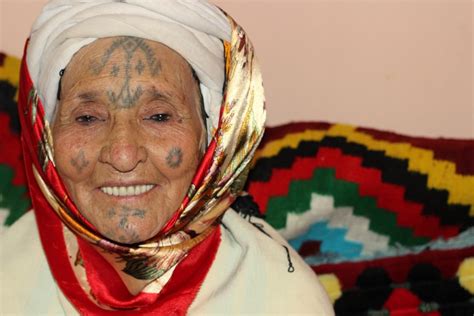Berber tattoos were undoubtedly initially a distinctive sign, a mark of a tribe. Each clan had its particular designs and decorative composition. All the clan's women were labeled, willingly or forcibly, at the age of puberty. One of the reasons for that is the ability to recognize them in case of kidnappings that followed wars, fights, and raids.
Each tribe had its "maalema." She is a master in an art peculiar to its clan, which adorned during a painful and lengthy process, the wives and fiancées with magical designs. The symbols' arrangement, meaning, and names differed from those of neighboring tribes, just as the decorations of the carpets or woven fabrics varied.
Some tribes used tattoos to intimidate their enemies; The hostility of a tribe or the clan spirit retained their purity in these distinctive tattoos.
As Berber transhumance flourished and the ostracism between clans diminished, safety prevailed, and marriages between Berbers from different origins became normality. A mixture of symbols in Berber tattoos appeared. And more fantasy was introduced into the composition of drawings which were, at some point in time, nothing more than magic conjuring signs, ornaments, and adornments for women.
Men, among the Berbers, are rarely tattooed, except among the Zemmour, the Beni-Mguild, and the Aït-Youssi.
The decoration of the tattoo is composed almost exclusively of geometric figures and straight, broken lines, most often similar to the patterns of carpets and fabrics of Berber tribes.
The basic designs are the basis of all decorative tattoo fantasies and carry names that change when modified or composed according to the art and inspiration of the "maalema." The most common are: the comb, fly wings, fishbone, saw, and pigeon's foot.
There is no doubt that the practice of tattooing was in a transitional state in Morocco from the early days of Arab arrival to Morocco. The teaching of Islam forbids any permanent alteration "tattoos with henna is not prohibited" to god's creations. Consequently, fewer women are getting tattooed, and many of the original meanings and the availability of the repertoire of designs were also changing. However, tattoos in different artistic traditions have always had a special significance. Through them, women could find means of expression without words, beyond the constraint of Islamic society and a mere enhancement of physical beauty.


